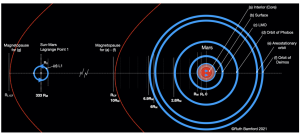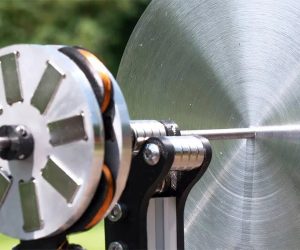
This is a great paper that I am following up with Dr Bamford in regards to jump starting the L1 solenoid option discussed in it. The 10^7 joules required to be stored in the solenoid will first require a minimum power requirement to overcome the inductance. This could in theory be achieved by storing the required gigajoules in the form kinetic energy in a very high speed projectile travelling at km/s though the solenoid cavity to jump start it. The Kinetic energy should be slightly beyond the required theoretical power required to send a current through the solenoid. The magnetic projectile should also spin like a rifled bullet or like a flywheel so that it’s orientation is consistent as it passes through the central cavity of the solenoid while it interacts electro magnetically to jump start it with current and voltage.

Above is a human scale flywheel that maintains orientation while spinning. Like a bullet. Bullets also spin to stay oriented consistently during it’s flight.
Speaking of flywheels it might also be possible to store the solar energy into the spin of a electromagnetic or magnetic flywheel connected to the solenoid’s closed circuit. However it’s disconnected until it ramps up enough energy by spinning up gradually with solar to to jump start the solenoid(with help possibly from the above mention spinning magnetic projectile idea) by reconnecting with it’s circuit once the required RPM is reached. If both ideas are used as a combination timing will be essential. Perhaps it’s more practical to pick one.
A third option and this is my favorite, use smaller solenoids called SMES(Super Conducting Energy Storage).
https://en.wikipedia.org/wiki/Superconducting_magnetic_energy_storage
These are basically solenoids designed to store energy like a battery rather than to sustain the largest magnetic field possible. They have lower inductance the smaller they are. We can have a small one start a larger one and that can start a larger one and this can go on until we start the main solenoid that protects Mars. Like a cascade tree array of SMES to jump start the megastructure solenoid.
In summary we have 3 options as a starting motor for the electromagnet of Mar’s L1, some of which can mix:
